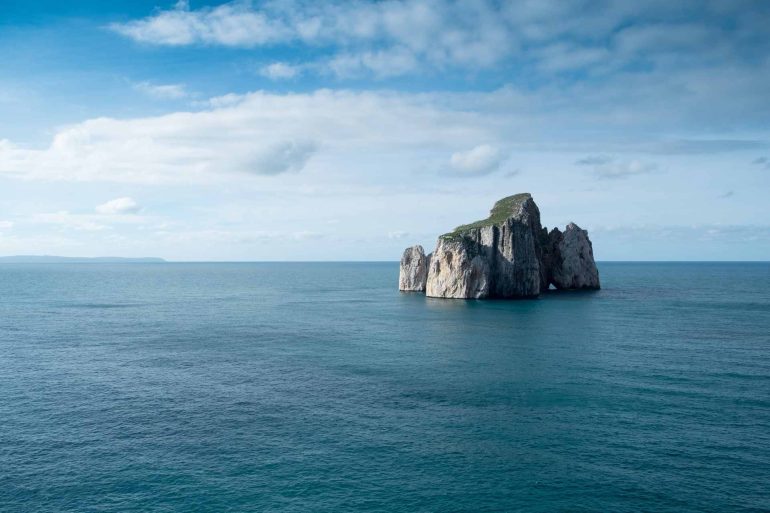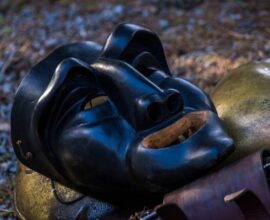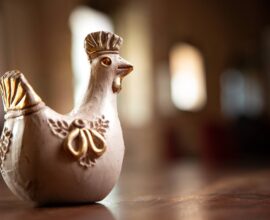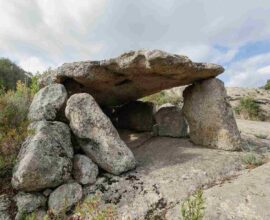Green Sardinia: 5 extraordinary natural monuments
Sardinia’s natural monuments: features that leave you breathless
Thanks to its extraordinary variety of landscapes, geological features and biodiversity, Sardinia is the Italian region that boasts the largest number of natural monuments.
In addition to its fabulous sea and white fine sand shores that have made it the top destination for beach holidays, Sardinia boasts landscapes and natural heritages of immeasurable value.
Its magnificent territory, largely still unspoiled, is home to many nature reserves, marine protected areas, regional and national parks, invaluable biodiversity and the largest number of natural monuments in Italy.
Shaped over the centuries by the power of atmospheric agents, natural monuments are features of the landscape that stand out for their morphological characteristics, size, age or how they were formed.
In Sardinia, the regional laws currently recognize and protect 27 natural monuments but their real number is closer to the hundreds thanks to the island’s richness of geological features and terrains.
Visiting these scenes is a completely novel and extraordinary experience full of amazement for nature’s incommensurable and perfect beauty.
Natural monuments of Sardinia: the unmissable 5
A trip to Sardinia can include many activities: diving through crystal clear waves, relaxing on sun-kissed sandy shores, discovering its important past visiting the numerous Nuragic relics and active open-air excursions in the presence of nature’s masterpieces.
Sardinia’s natural monuments showcase a wild and unique side of the island. The timeless beauty of these spectacular attractions will leave you breathless.
Let’s discover together the 5 natural monuments that you cannot miss on a trip to this region.
Domo Andesitico di Acquafredda
Near the town of Siliqua, dominating the Cixerri Valley, the Domo Andesitico of Acquafredda is a majestic relief of volcanic origin that stands over the surrounding plain. This is a site of great scientific interest and rich in biodiversity. To make the view even more spectacular, on its top rise the ruins of an ancient medieval castle, the Castle of Acquafredda. Built in the thirteenth century, its perimeter walls, its main tower, some cisterns and parts of its defensive walls are still standing today. From this advantage point, the panorama extends to the entirety of the exceptional Cixerri valley and, when the sky is clear, the view can reach all the way to the Marmilla, the Inglesiente, ponds of Cagliari and the Mediterranean. At the foot of the hill lies a pine grove which is perfect for regenerating walks and picnics. For the delight of the keen birdwatchers, many species of birds nest within the walls of the manor including the rare kestrel falcon.
The Columns
In the heart of the Sulcis archipelago, in the southern part of the Island of San Pietro, two imposing dark grey pillars with a slender shape rise from the sea. The Columns of Carloforte, shaped by wind and water, were both 16 meters high until 2010. Following violent storm surges, only one is still fully standing today while only the base of the other remains. They are the symbol of a wild and rugged landscape, shaped by caves, cliffs and ridges, the most authentic soul of Sardinia. There are many legends surrounding their volcanic origin: they are said to be two sea monsters turned into stone by the apostle Peter or two sailors petrified by divine punishment. The Columns are featured in many boat excursions itineraries and are one of the most popular destinations for wonderful boat trips.
Pan di Zucchero
Pan di Zucchero (Sugar Loaf) is the majestic symbol of the coast of Iglesias. Just a few metres from land, it is one of the most enchanting natural monuments of Sardinia and the highest stack in the Mediterranean. With its rounded and massive shape, it resembles a powerful sugar cube floating in the sea. Named after the famous Pão de Açúcar that stands in the bay of Rio de Janeiro for their resemblance. It can be reached by boat or dinghy and specialised guides are available to help climbing enthusiasts scale the rock walls. At sea level, two caves have been dug by the action of karst phenomena. Respectively 20 and 25 meters in size, they are the ideal habitat for many seabirds.
Oliveto storico S’Ortu Mannu
700 centuries-old olive trees give life to a magical forest just three kilometres away from the town of Villamassargia, in the Inglesiente. The Oliveto Storico S’Ortu Mannu (historic olive grove), is an authentic natural museum. The large grove, which houses olive trees grafted between the fourteenth and seventeenth centuries, is a naturalistic oasis of 13 hectares. It has its roots in medieval times when the Benedictine monks started the first nucleus. At the centre of the natural park, established in 2011, stands the sa Reina, a 900 years old olive tree whose trunk has a 16 metres circumference, a true natural monument.
Su Stampu de Su Turrunu
Between the areas of Ogliastra and Barbagia, on the border between Sadali and Seulo, an incredible natural monument is immersed in the lush forest of Addolì. The Su Stampu de Su Turrunu is a natural tunnel carved by the erosion of water in the Jurassic rocks of reliefs with steep walls. An absolute natural masterpiece where the stream su Longufresu creates a pond at the feet of a 16 meters waterfall. The sound of the water crashing on the rock, the reflections of the light and the lush vegetation create a magical and enchanting landscape.
Would you like to admire Sardinia’s beautiful natural monuments and experience a dream holiday in an authentic paradise? Discover the Forte Village Resort in Sardinia






